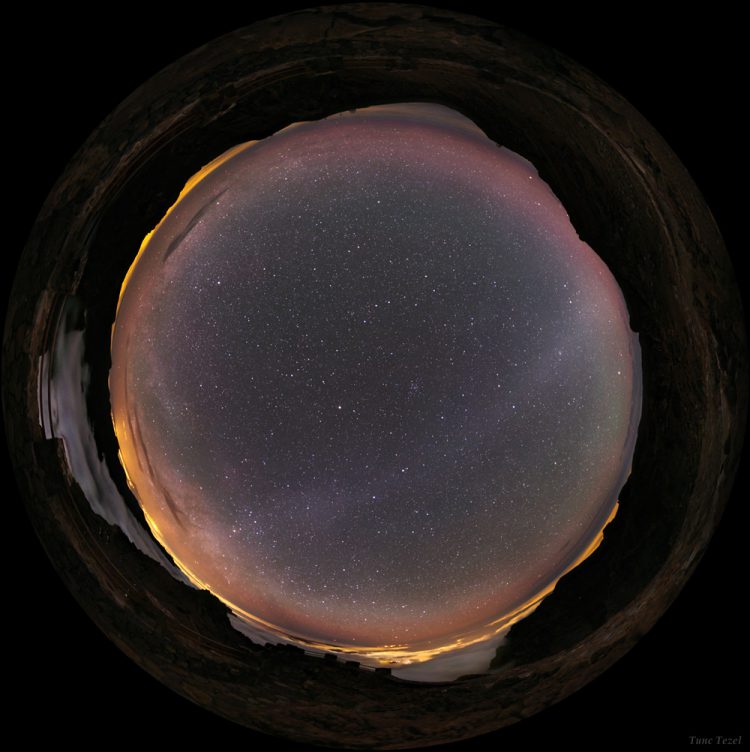Dark Sky Above La Palma
Description
In an ideal natural dark night, the faint glow of Zodiacal Light (sunlight reflected and forward scattered by dust in the plane of the Solar System ) is detectable as a complete band across the sky, as photographed here at the top of La Palma (2426 m) in the Canary Islands, besides the Observatorio del Roque de los Muchachos, where some of the world’s largest telescopes are situated. Dark starry sky is an essential beauty of our natural environment but it is also astronomically important. Skyglow above many of us does not allow to see the darkest possible sky. Skyglow is caused by light pollution, moonlight, twilight, aurora, the zodiacal light, and in minor effects bright planets and starlight (Milky Way and individual stars), and airglow (natural faint glow of our atmosphere). To achieve this image TWAN photographer selected a new Moon night (no Moon) and selected a time when the Milky Way has touched all around the horizon (visible as a circle around the horizon) with the minimum share in causing skyglow. The light around the horizon in this view is partly from urban areas but mostly represents the disc of our home galaxy, the Milky Way. In this dark sky there is a faint patch of light across the sky which is the Zodiacal Band, the fainter continuation of Zodiacal Light. A slightly brighter region of the band is an oval glow of back scattered light directly opposite the Sun and known as the Gegenschein (German for “counter glow”) which might be seen with unaided-eye under very dark skies. It is clearly visible in this view above southern horizon in the constellation of Libra. As added by the photographer “I had long intended to make a northern counterpart image of the all-sky image taken by my TWAN colleague Stéphane Guisard in Chile. La Palma lies one to two degrees too far north of the optimum latitude (27 degrees North) but thanks to the clear skies and high altitude I was successful. The foreground is not as dark as Cerro Paranal in Chile, but still quite dark, thanks to the blanket of lower clouds cutting the city lights. Creating this all-sky picture took a week to construct, process, and clean. The picture consists of 32 separate shots making a 190-megapixel monster!”

comments (2)
The beautiful picture along with the note is ok. How it happens where it is seen apart from LaPalma, Spain.
September 4, 2011 at 9:15 amThanks for your comment. This northern hemisphere view of Milky Way all around the horizon can be seen anywhere around 27th North parallel. La Palma and other Canarias islands are located close to this parallel. Other places on 27th North parallel are Sahara Africa (Morocco, Algeria, Libya, Egypt), Arabian Peninsula, extreme southern Iran, southern Pakistan, India, Bangladesh, Myanmar, northhern Vietnam, southern mainland China, northern Taiwan. The parallel also crosses Mexico, southern Florida in USA and Bahamas. In fact, I had originally planned to take the picture from an oasis in southern Libyan desert in Sahara, when I was working in Libya as a civil engineer until March 2011.
September 4, 2011 at 10:55 am